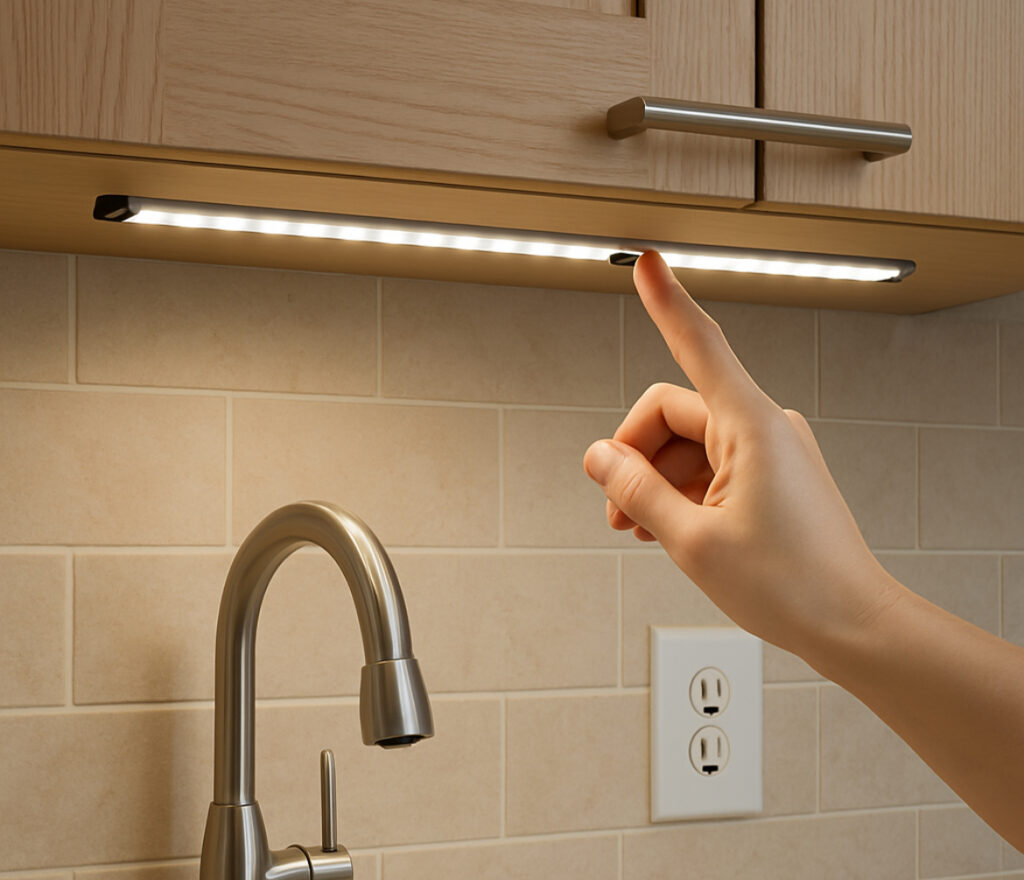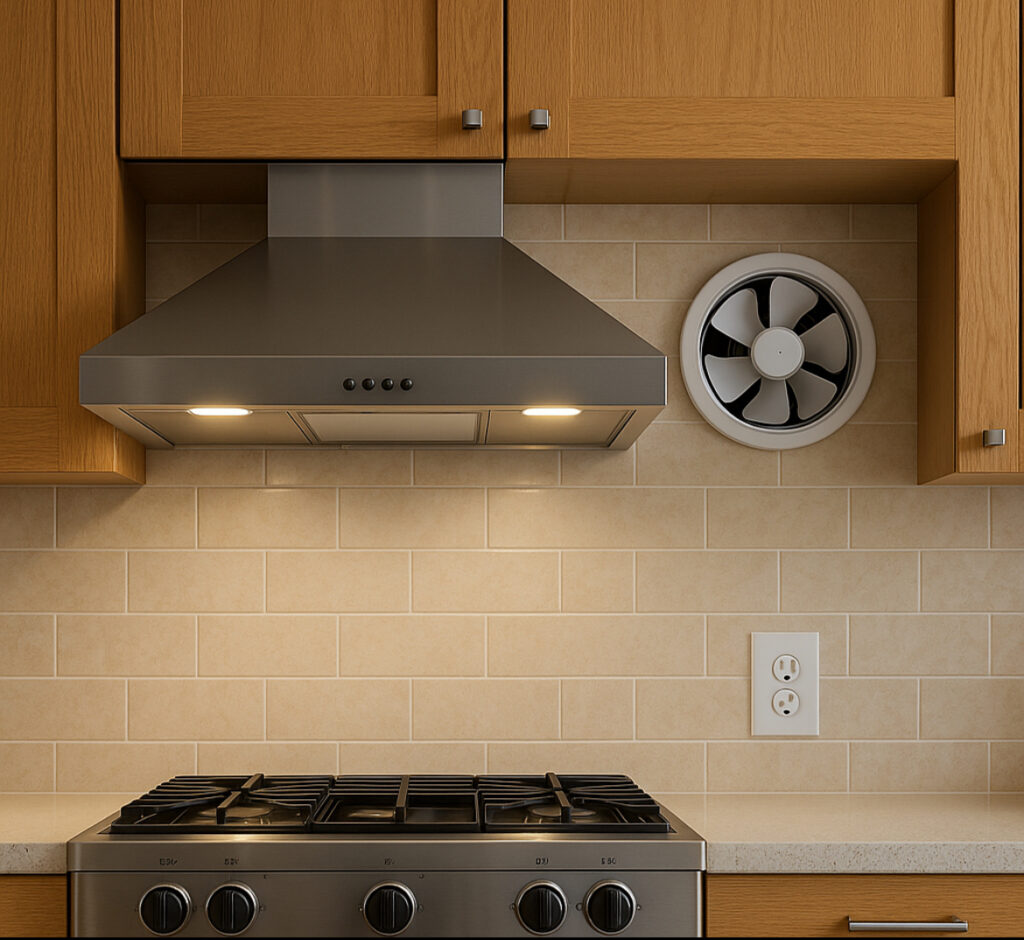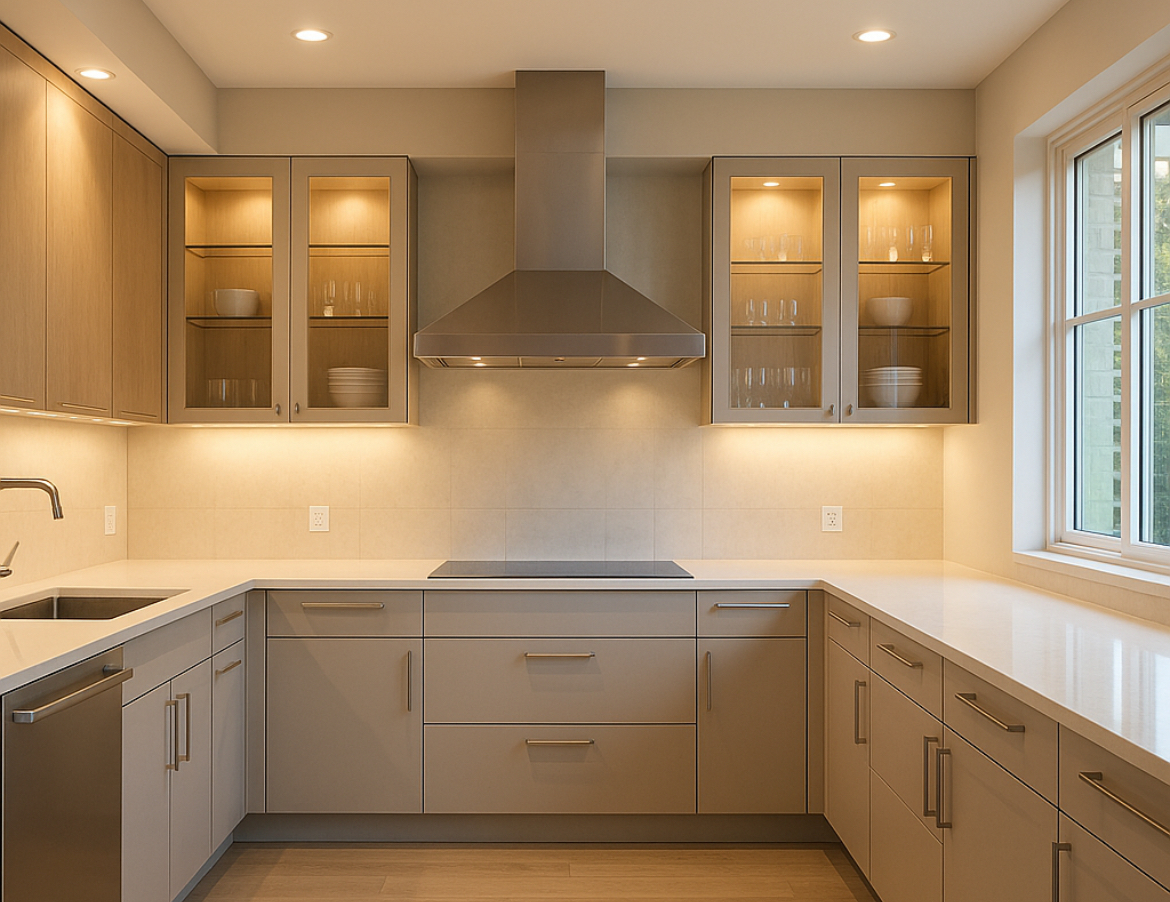Lighting and ventilation in modular kitchens not only enhance aesthetics but also improve functionality and comfort. A well-lit kitchen enables efficient cooking, while effective ventilation ensures a clean, odor-free environment. Combining smart lighting choices with strong air circulation transforms a modular kitchen into a modern, breathable, and welcoming space.
Table of Contents
Why Lighting and Ventilation Matter in Modular Kitchens
Lighting and ventilation are two pillars of kitchen ergonomics. Without them, even the most luxurious kitchen layouts can fall short in terms of usability and hygiene.
Key Benefits:
- Enhanced visibility for cooking and cleaning
- Reduction in smoke, heat, and odors
- Improved indoor air quality
- Elevated kitchen ambiance and mood
- Energy efficiency when done right
Types of Lighting in Modular Kitchens

1. Ambient Lighting (General Illumination)
Ambient lighting in modular kitchens sets the overall tone. It distributes light evenly and eliminates dark corners.
Best Options:
- Ceiling-mounted LED fixtures
- Recessed lights
- Pendant lights in open kitchens
Tip: Use dimmable lights to adjust brightness based on time of day.
2. Task Lighting (Focused Illumination)
Task lighting in kitchens is crucial for areas where precision is key—like chopping, cooking, and reading recipes.
Where to Install:
- Under cabinets
- Inside drawers and pantry units
- Over countertops and sinks
Pro Tip: Opt for LED strip lights or puck lights for sleek installation and energy efficiency.
3. Accent Lighting (Decorative Illumination)
Accent lighting in modular kitchens is used to highlight décor elements or architectural features.
Ideas:
- Above cabinets
- Inside glass-front cabinets
- Around the breakfast bar or island
Design Tip: RGB LED lights can add a splash of color and ambiance for parties or evening dinners.
When selecting fixtures for your modular kitchen, always prioritize energy-efficient lighting like LED and CFLs, which not only reduce electricity bills but also last longer. According to the U.S. Department of Energy, LED lighting uses at least 75% less energy and lasts 25 times longer than incandescent lighting.
Smart Lighting Integration

Modern kitchens benefit from smart lighting systems that offer automation, voice control, and scheduled dimming.
- Connect lighting with smart hubs (Alexa, Google Home)
- Set timers for energy savings
- Use motion sensors for pantry or drawer lighting
Importance of Ventilation in Modular Kitchens
Kitchens generate steam, smoke, and strong aromas. Without adequate ventilation in modular kitchens, the air quality can deteriorate quickly.
Effective Kitchen Ventilation Solutions

1. High-Suction Chimney Hoods
The most efficient method of removing cooking fumes, chimney hoods for modular kitchens come with filters to trap grease and smoke.
Recommended Features:
- Suction power of 1000+ m³/hr
- Auto-clean technology
- Baffle filters (especially for Indian cooking)
Positioning Tip: Install directly above the stove at an ideal height of 26–30 inches.
2. Exhaust Fans
While chimneys handle intense cooking fumes, exhaust fans provide constant air circulation.
Advantages:
- Low energy consumption
- Easy installation
- Ideal for smaller kitchens or as a backup to chimneys
Tip: Use in conjunction with a window or louvered vent for better cross-ventilation.
3. Natural Ventilation Techniques
Natural ventilation in modular kitchens is cost-effective and sustainable.
Methods:
- Large operable windows
- Skylights
- Louvered glass panels or ventilators
Sustainability Note: Cross-ventilation from windows on opposite walls can reduce dependence on exhaust systems.
Combining Lighting and Ventilation for a Healthier Kitchen
When designing or renovating your modular kitchen, integrate lighting and ventilation solutions holistically.
Design Tips:
- Avoid blocking natural light sources with tall cabinets.
- Use reflective finishes (like glossy tiles) to enhance lighting effects.
- Position chimneys and windows where air naturally flows out.
Maintenance Tips for Long-Lasting Impact
- Clean chimney filters every 2 weeks if you cook often.
- Wipe down LED covers and under-cabinet lights to maintain brightness.
- Check exhaust fans for dust and grease buildup monthly.
Conclusion
Focusing on lighting and ventilation in your modular kitchen is more than just a design decision—it’s about enhancing safety, usability, and ambiance. With the right combination of layered lighting and efficient ventilation, you can create a space that’s not only beautiful but also functional and breathable.
FAQs on Lighting and Ventilation in Modular Kitchen
What type of lighting is best for a modular kitchen?
A layered lighting setup combining ambient, task, and accent lighting is best. It balances functionality and aesthetics
Are chimneys necessary for ventilation in modular kitchens?
Yes, especially if you cook often. Chimneys with high suction help eliminate smoke, oil, and odors effectively.
Can I rely only on natural ventilation?
Natural ventilation is good but may not be enough for heavy cooking. Combine it with mechanical ventilation like chimneys or exhaust fans.
How do I choose the right lights for task areas?
Choose bright, focused lights such as LED strips or puck lights for under cabinets, near sinks, and cooking counters.
Is smart lighting worth it in the kitchen?
Yes. Smart lighting adds convenience, saves energy, and allows mood customization based on time and activity.
Also Read:
